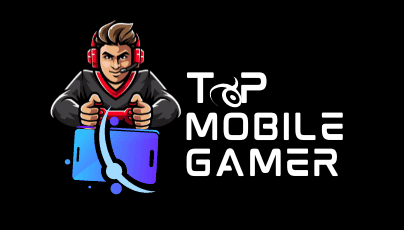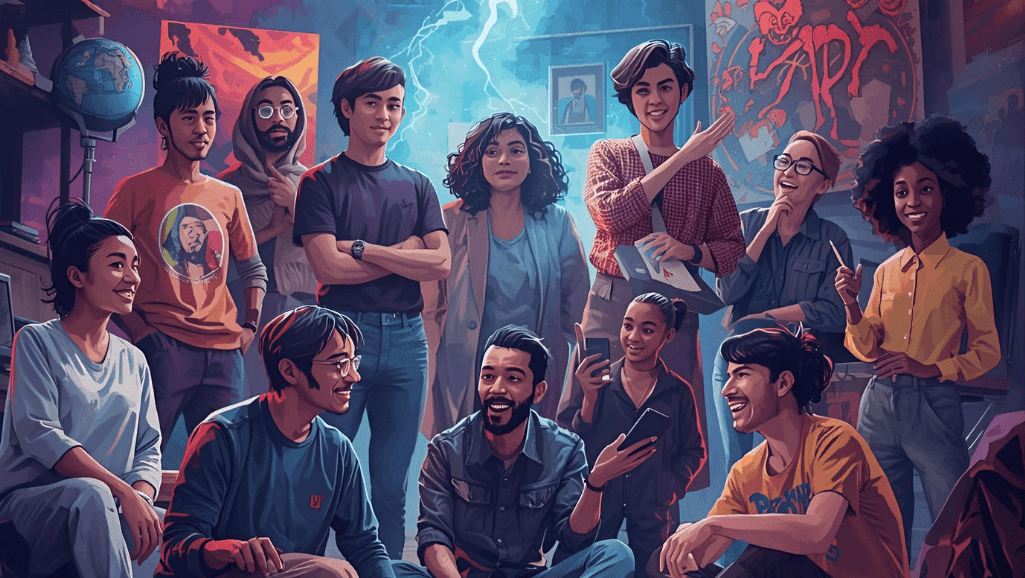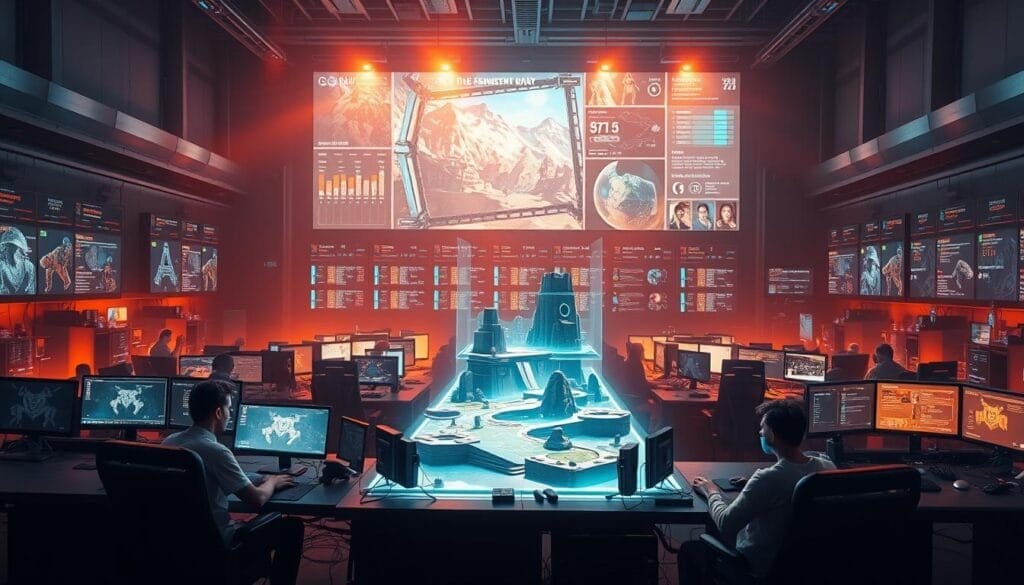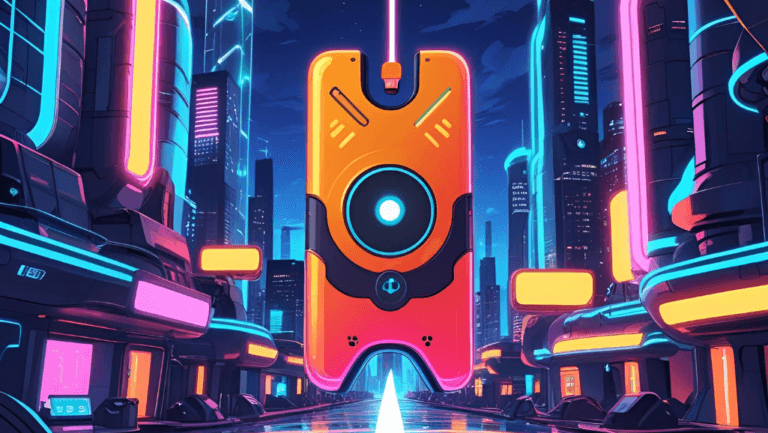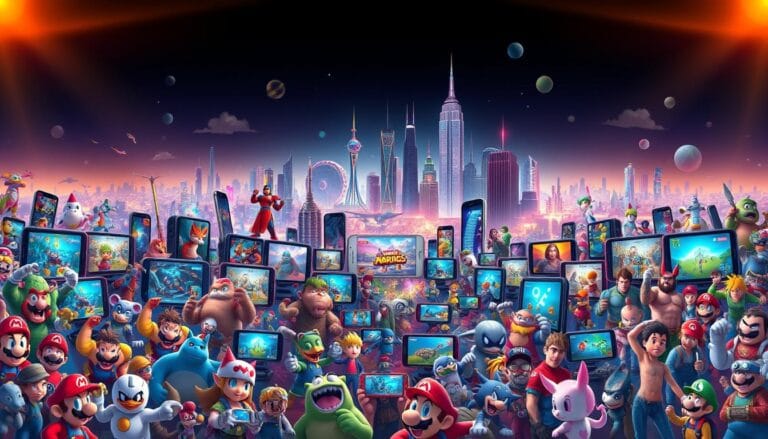Today’s studios are shifting fast. Adoption of AI in Game Development is no longer hypothetical — it’s active across major platforms and companies. Roblox is building text-to-3D scene generation where modular cubes act as tokens to assemble editable environments on the fly. A16Z polling (cite source) reports high generative-tool usage for in-world assets — a trend studios and publishers are responding to now.
This moment marks an inflection point. Ubisoft is testing procedural dialogue options while many teams add automation into their content and QA pipelines. Market forecasts (cite source) peg the sector tied to smart systems at roughly $11.4B with a 26.8% CAGR through 2032, signaling that these technologies are moving from experiment to core infrastructure.
Practically, that means faster iteration, broader access to creative workflows, and a rebalanced production model that centers art direction and narrative voice while trimming routine complexity. This report maps current adoption, where value lands today, shifting power dynamics, production impacts, risks, and a short roadmap teams can use to find near-term ROI.
Key Takeaways
- AI in Game Development: generative systems are being used across prototyping, asset creation, and QA.
- Adoption is real: measurable uptake among studios — from indie teams to AAA — means these tools affect hiring and process decisions.
- Market momentum: forecasts and investment activity indicate a multi-year technology shift for the industry.
- Production impact: expect faster cycles, wider creative participation, and shifting roles on teams.
- Responsible ops win: companies that pair governance with tooling gain a competitive edge.
- Read on: the report provides a practical roadmap for U.S. teams to pilot and scale tools safely.
The state of AI adoption in gaming right now
More studios are turning experimental tools into standard parts of their pipelines. Adoption in game development has moved beyond pilots: over a third of game developers — roughly 36% — report their studio now uses generative systems for core tasks like asset creation, prototyping, and automated QA. This shift reflects a broader industry move to bake AI-driven tooling into day-to-day workflows.
From pilot to practice: 36% of studios already using tools
Studios cite concrete uses: environment generation, content pipelines that produce variant assets, and automated testing that runs large scenario matrices. Small indie teams and mid-size developers tend to prioritize speed and rapid iteration, while AAA studios invest in large-scale integrations that change baseline production processes and tooling stacks.
Market momentum: $11.4B and a 26.8% CAGR
Forecasts place the market at $11.4B with a 26.8% CAGR through 2032.
Those figures indicate the market for AI tooling and services in games is shifting toward core infrastructure rather than remaining an experimental add-on. Expect continued research and investment in models and middleware that support production needs.
Who’s leading: Roblox, Ubisoft, and others
Roblox is building text-to-3D scene generation that turns prompts into editable worlds, and Ubisoft has publicly tested generated dialogue options to speed writing and iteration. Major companies and platforms are committing capital and engineering resources — in some cases large investments — to operationalize these tools across pipelines.
The near-term outlook: as research advances and models become more reliable, tool variety will expand from creative generation to QA automation and systems orchestration. That momentum will reshape time-to-first-playable and free developer hours for higher-impact creative work.
- Operational use: broad uptake for environments and content pipelines across studio sizes.
- Competitive pressure: investment and tooling raise expectations for production speed and scope.
- Tool variety: generation, testing, and orchestration tools affect multiple stages of development.
AI in Game Development: Where It’s Delivering Value Today
Writers, artists, and testers are turning concepts into playtests faster than ever. In modern game development, tools accelerate the path from idea to interactive feedback: writers can draft branching dialogue, artists generate asset variants instantly, and QA bots surface regressions across thousands of scenarios so teams validate designs with players sooner.
Storytelling and NPCs
Writer-led design treats generated text as a rapid sketching tool: prompt a model, produce draft lines or branching trees, then have writers edit and lock voice. Ubisoft-style prototypes have shown how generated dialogue can speed iteration while keeping final control with narrative leads. A simple workflow looks like: prompt → draft lines → writer edit → playtest with players → QA feedback.
Worldbuilding at prompt-speed
Prompt-driven scene generation — exemplified by text-to-3D efforts on platforms like Roblox — turns a line of text into editable layouts and environmental assets, letting designers move from greybox to polish quicker. That generation capability shortens layout cycles and produces multiple world variants for rapid A/B testing of level flow and player experience.
Testing, assets, and personalization
Automated scripts and bots run large scenario matrices, cutting repetitive QA work and feeding issue trackers faster. Meanwhile, artists use generative pipelines to produce art, music, and VO variants that teams curate by hand, accelerating iteration on assets while preserving artistic direction and consistency.
“Tools let teams validate ideas with real players days earlier than before.”
- NPC dialog prototyping for rapid iteration, enabling more player-facing tests
- Automated bug-finding loops that scale QA coverage and speed
- Personalization systems that adapt content and difficulty to player preferences
Power Dynamics Are Shifting: Creatives at the Center of the Development Process
A new center of gravity is emerging: with routine scaffolding handled by tooling, artists and writers increasingly steer production. Creative-led releases and rapid prototypes now often begin with visual scripting or conversational prompting instead of traditional code-first workflows.
From Citizen Sleeper to self-aware prototypes: examples of creative-led work
Citizen Sleeper is frequently cited as an example where a writer-artist approach and visual scripting played an outsized role in shipping a focused, voice-driven game. Similarly, community examples — like hobbyist prototypes produced with conversational coders and model prompts — show how quickly playable ideas can reach player testing. These cases illustrate that the ability to craft characters, narrative, and environments can be the primary axis of early development.
The new bottleneck: what happens to junior developer roles as routine code shifts?
As automation absorbs repetitive technical tasks, traditional entry-level programming work may shrink. That compression creates a potential training bottleneck: early-career developers have fewer opportunities to learn core systems through incremental ownership of scaffolding code.
- Spotlight roles: studios should fund mentor pathways, apprenticeships, and hybrid design-engineering positions to preserve on‑ramp opportunities.
- Skill shifts: emphasis moves toward art direction, narrative craft, tool orchestration, and problem solving rather than repetitive implementation.
- Team flow: fewer handoffs speed iteration and let creative leads validate ideas with players earlier in development.
“Craftsmanship — art direction and voice — remains the defining advantage that technology cannot replicate.”
Practical studio responses include defining new role templates (toolsmith, prompt engineer, content validator), running internal rotation programs, and tracking measurable outcomes like time-to-productivity for junior hires after upskilling. Studios that realign training and create explicit mentorship paths will keep healthy talent pipelines while enabling creatives to guide tools toward expressive, polished game experiences.
Production workflows, time-to-market, and the end of perpetual crunch?
When routine work moves to automation, teams can pull playable builds forward and fix course with less chaos. Shorter loops reduce the time from idea to feedback and lower pressure on late-stage schedules, giving producers room to reframe milestones around learning rather than purely feature delivery.
Speed vs. soul: alleviating tedium without sacrificing craft quality
Where time is shaved: environment blocking, rapid asset variants, automated QA passes, and first-draft dialogue generation. These steps strip out repetitive tasks and can materially reduce overtime when teams adopt clear rules for tool use.
Text-to-3D pipelines accelerate worlds creation by producing editable layouts and variant models fast. Designers iterate layout and art direction quickly, producing multiple playable variants to test gameplay flow and player experience while keeping final polish under human control.
“Faster prototypes pull player feedback earlier, helping studios avoid costly late pivots.”
- Scheduling impact: shorter loops move tests forward and stabilize milestones—measure by build frequency and iteration time.
- Change management: set a governance checklist: when to use automated generation, escalation paths to specialists, and quality gates for final art and code.
- Player-first outcome: more iterations in fewer years produce better-feeling experiences without ballooning budgets; instrument tests to capture player metrics early.
Producers should reframe milestones around playable learning: replace large monolithic milestones with regular playable checkpoints, attach KPIs (iteration time, bug rate, build success, and overtime hours), and require human sign-off at quality gates. With tight review rules and clear escalation, teams can offload drudgery while protecting the soul of the work and improving time-to-market.
Limitations, risks, and ethics developers must navigate
Tools extend creative reach, but they also surface hard product and policy questions. Teams must balance speed with safety, player privacy, and the craft that defines memorable games.
Technical ceilings and scope limits
Current models excel at focused generation but struggle with sprawling codebases and long‑form titles. Large, multi‑dozen‑hour game systems still require human-led systems design, careful architecture, and engineering rigor—especially where emergent gameplay and cross-system interactions matter.
Developers should plan for manual orchestration on core systems, keep critical logic out of blind automation, and treat generated modules as replaceable components that require human testing and integration work.
Safety, moderation, and data guardrails
Real‑time moderation of voice and text is already a production concern on major platforms. Nuance and cultural context can produce false positives or allow harmful content through; moderation systems are imperfect and need human review paths.
Companies should implement transparent moderation policies, appeal workflows, and human reviewer pipelines. Add provenance tracking for generated assets, maintain clear consent for player data, and limit retention used for model training to protect privacy.
Workforce, skills, and creative integrity
Automation can compress routine tasks and entry-level roles, so studios must invest in upskilling programs that teach design thinking, tool orchestration, and model literacy. That preserves career pathways and helps emergent roles—toolsmiths, prompt engineers, and content validators—flourish.
Artists and writers need explicit brand guidelines, style frameworks, and approval gates to prevent homogenized outputs and protect a studio’s unique voice.
“Treat these systems as assistive layers — not replacements — and preserve growth pathways for future developers.”
- Run test harnesses and red-team prompts to uncover failure modes before players see them.
- Adopt data retention and training guardrails: log provenance, enforce consent, and limit used datasets.
- Require human-in-the-loop reviews for final content and video outputs, especially for sensitive or player-facing systems.
Conclusion
Today’s pipelines let artists and writers move from idea to playtest in far fewer steps. That reduction in friction makes game development a practical lever for faster iteration and richer player experiences: teams can validate concepts earlier, polish what matters, and run more hypothesis-driven development cycles.
Studios see clear value across the board: rapid content and asset generation, assistive dialogue systems for characters, and stronger automated test cycles that sharpen player-facing features. When paired with human curation, these capabilities expand creative bandwidth without replacing core craft.
Art direction and narrative voice remain decisive. Tools such as text-to-3D pipelines and assistive coders elevate writers and artists rather than supplant them; the defining advantage is still the studio’s ability to direct and refine generated content into a cohesive game.
At the same time, complex systems require senior engineers, architectural rigor, and strict quality gates. Companies should invest in skills development, clear ethical rules, and proven tooling to protect design fidelity and long-term polish.
For game developers: formalize when to use a tool, how to review outputs, and how to guard your creative voice. People thrive when drudgery drops — freeing time to craft memorable video games.
